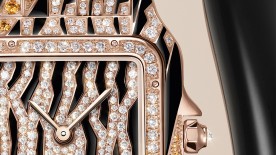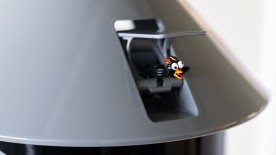Kristian Haagen
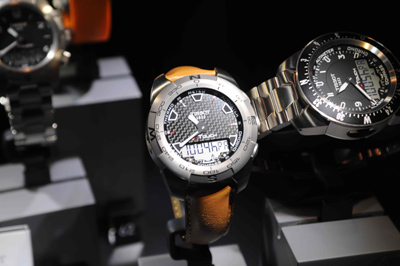
The Tissot T-Touch accounts for more than 250,000 watches sold each year. © Kristian Haagen/Worldtempus
Tissot sold more than three million watches in 2011 and Swatch Group colleague Longines passed the one million mark in 2011. In other words, these two Swatch Group companies comfortably perch on many wrists around the world, not the least of whom are located in China - which undoubtedly is these two brands' biggest single market.
The tactile success
“13 years ago Mr. Hayek asked who wanted to produce a tactile watch, and I was the only one who raised my hand,” Tissot CEO Francois Thiébaud said.
The tactile watch, of course, is the highly successful T-Touch, a multifunctional watch that has been a pearl of the Tissot collection since its launch in 1999. “I am a private pilot myself and enjoy a multifunctional watch,” Thiébaud revealed. “I had no doubt about the success of this kind of technology put into a wristwatch”
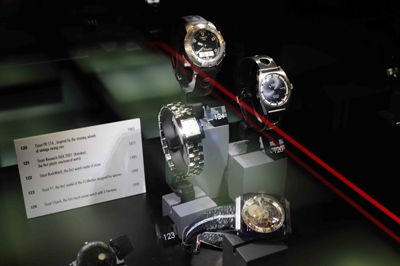
Tissot displayed several historic pieces at their Baselworld, such as this plastic watch from 1971 that appeared well before swatch. © Kristian Haagen/Worldtempus
No regrets
“The T-Touch collection today accounts for more than 250,000 pieces of our annual sales,” Thiébaud revealed, clearly not regretting his choice of production at the fateful Swatch Group meeting 13 years ago.
The success of the T-Touch, however, is not the only reason why he is all smiles. The company he captains experienced a sales increase of 45 percent from 2009 through 2011 - years in which many other brands struggled. This primarily occurred thanks to the huge demand from Chinese clients buying both from their mainland retailers and foreign outlets when traveling.
With an average price of 200-500 Swiss francs, Tissot offers both classic Swiss timepieces and innovative, sporty watches such as the T-Touch. Thiébaud and Tissot must be doing something right since one in five exported Swiss watches is a Tissot. “We sold 3.4 million watches in 2011 and I expect to sell four million watches in 2012,” Thiébaud smiled.
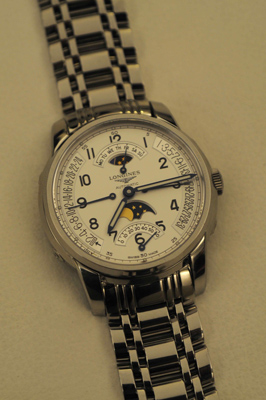
Understanding the Chinese
How did Tissot become so hugely popular in China? We asked Longines CEO Walther von Känel, one of the most experienced and respected CEOs in the Swiss watchmaking industry, attending his 37th Baselworld.
“Longines sent its first invoice to Chinese clients back in 1867. Our history with the Chinese market goes way back. I visited China for the first time in 1971 and made business directly with the government. A few years later, the first Chinese delegation visited Switzerland,” von Känel explained his first acquaintance with the largest consumer of Swiss watches today.
“In the 1980s, we opened our first representative office in mainland China (including Omega and Tissot --ed). Doing this gave us the opportunity to study the culture and get to know the Chinese customer up close,” von Känel explained. “Understanding local culture is essential for any sale.”

Longines celebrates its 180th anniversary by relaunching early models such as these monopusher chronographs in steel and rose gold. © Kristian Haagen/Worldtempus
One million watches
Longines produces watches that are strong in the 1000-1300 Swiss franc segment. “We passed one million watches in 2011,” von Känel revealed. “That means that we sell 6-7,000 watches a day of sales,” he laughed, declining to comment on what markets will come after BRIC.
“Longines is everywhere. Right now in China there's no limit for the next ten years. As long as Longines stays focused and maintains our continuing production and consistent quality and development then we will stay on top of the world. As I tell my colleagues every year, we need to reach the magic numbers and stay positive,” von Känel leaned in over the table to emphasize his remark.





